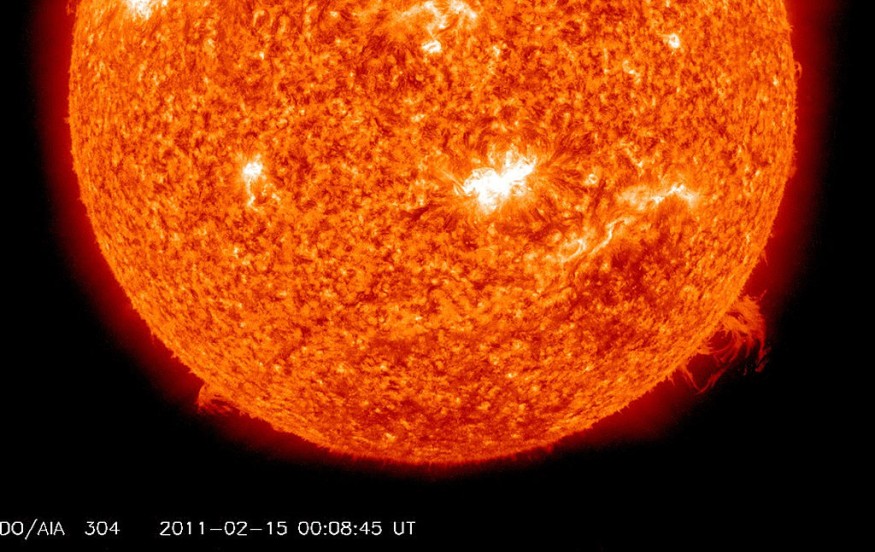Solar experts had been studying a sunspot that expanded to be four times the size of our planet and then released a solar flare that was believed to have been 10 million degrees Celsius (18 million degrees Fahrenheit) in temperature.
Solar flares happen when areas of the Sun's surface become intensely magnetized and the regular convection process is prevented. According to Interesting Engineering, sunspot is a darker area on the Sun that can be seen from Earth and lowers the surface temperature in contrast to other regions, resulting from this.
Radio Disrupting Solar Flare
An astronomer saw an M-class flare, characterized as a flare of moderate intensity, Newsweek reported. A, B, and C classes of solar flares have lower intensities, whereas X-class flares are thought to have the highest intensities.
According to the solar activity website Spaceweatherlive.com, there was a 5% chance that the sunspot would cause an X-class outburst.
Later that day, the moderate intensity flare's impact on a brief radio blackout over the Pacific area was confirmed by the National Oceanic and Atmospheric Administration's (NOAA) Space Weather Prediction Center.
Sunspot AR3088, visible from Earth but facing away, became active as the Sun turned. Scientists studying the Sun are currently preparing for its activity. The sunspot will turn to face Earth after the Sun has finished spinning after sending a strong flare towards Venus last week.
When AR3098 was facing Earth on Sept. 12, it did emit a large flare, which a solar astronomer tweeted about.
FINALLY! AR3098 just released an M1.7 flare at the end of the day on Sept. 12 UTC. An nice impulsive event seen in SDO 131 showing plasma greater than 10 million Kelvin. Hot hot! ☀️🥵🔥🤩 The radio blackout is over the Pacific. pic.twitter.com/FCT34Rx1qM
— Dr. C. Alex Young (@TheSunToday) September 13, 2022

About Solar Cycle 25
Scientists study sunspots to track the Sun's activities, and they have found that the Sun's magnetic poles move every 11 years. During this period, the Sun reaches its solar maximum, marked by a significant increase in sunspot activity.
The 25th solar cycle of the Sun, which will likely peak in July 2025, is now underway.
This year, a period of enhanced solar activity has been noted. In March, government meteorological agencies in the U.S. and the U.K. reported that other geomagnetic storms had struck our planet.
The geomagnetic storms didn't damage anything, but they did emphasize the potential danger that may come from more powerful storms in the future.
After that, in July, a G1-class geomagnetic storm hit Earth, causing vivid auroras to appear across Canada's skies. On July 15, the Sun also unleashed a strong solar flare that was reportedly capable of creating global radio outages.
Solar flares are known to interact with the Earth's upper atmosphere and cause bright auroras in addition to radio blackouts. The aurora and their range get brighter the stronger the flare.
Check out more news and information on Space in Science Times.
© 2025 ScienceTimes.com All rights reserved. Do not reproduce without permission. The window to the world of Science Times.










